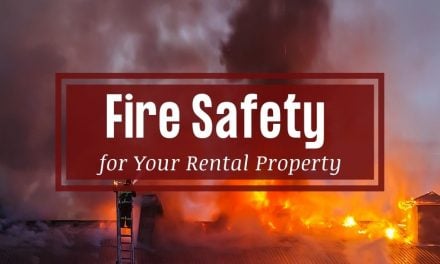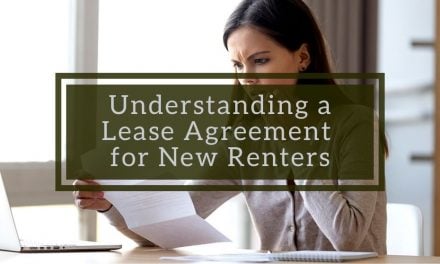
Even novice real estate investors know the basics: time the market, manage your risk, maintain a generous reserve fund, and using insider hacks like finding a discount broker to save money.
But general rules only get you so far. To flourish, you’ll need to run a careful, in-depth financial analysis of your prospective investments, and look at certain metrics, such as gross rent multiplier and cap rate. If that seems intimidating, don’t worry — it’s not as complicated as it sounds. Read on for a step-by-step guide on how to evaluate potential investments through financial analysis.
Gather the Relevant Information
To run a meaningful financial analysis, you need the right information. Using incomplete or inaccurate data means your investment could be at serious risk — without you even knowing it.
So what data, exactly, do you need to run a dependable analysis? Some necessary basics are:
- The property’s list price
- Required down payment
- Mortgage interest rate, and term of mortgage
- Annual property taxes
- Insurance premiums
- Utilities (ask for past utility bills to determine a rough average)
- Homeowners association (HOA) or condo fees
- Expected near-term capital expenditures
This might sound like a lot of information to gather, but you can get most of it from the property’s seller, their agent, your lender, and from public databases.
Consider the Location
It’s a cliche to say that the three most important factors in a real estate investment are “location, location, and location,” but it happens to be the truth. The location of your investment property is going to determine everything from its resale price, to the price appreciation you’ll enjoy, to how much rent you can charge, to the profile of tenants you can get. A hot location can even have trickle-down effects like a lower commission when you resell, since agents are eager to take on a fast sale.
Take a big-picture look at the area’s population density and growth rate, the local job market, the economic growth rate, the crime rate, the quality of the closest schools, the area’s walkability, and access to public transportation.
Two particularly important location-specific data points are the rental rate and the vacancy rate.
The rental rate determines how much rent you can charge for your property. The rental rate is often expressed as a percentage of the property value, and as a general rule, experts suggest a rental rate around 1% to ensure positive cash flow. For example, if your property is worth $300,000, and you go with a rental rate of 1%, that gets you a monthly rent of $3,000.
However, your rental rate can fall anywhere between 0.8% to 1.1%, depending on various factors. You’ll want to take into account the average income in the property’s location when you think about rental rate — for example, if the average income is on the lower end, you’ll want to stick to the lower end of that spectrum.
The vacancy rate is the percentage of time you can expect a property to be vacant and not generate rental income. For example, Airbnb investment properties often have a vacancy rate around 40% to 50%, so if you decide a property has 300 potential rentable days a year, you can expect it to be empty for 120 to 150 of those days. A high vacancy rate could suggest that the property has problems, or the rents being charged are too high for the area. On the other hand, a lower-than-average vacancy rate could suggest that rents are too low for the area.
Project Your Cash Flow
Now that you have a little hard data, it’s time to figure out what kind of cash flow you can look forward to. At risk of stating the obvious, you’ll want to target investments that will generate a positive cash flow — i.e., investments that can bring in rents that will cover your expenses, with some left over.
Start by projecting your rental income. You can do this by using historical data, including specific rent figures you get from the seller, or you can go by local averages. As a general rule, experts say a successful investment should bring in a rent that’s equal to 2% of the purchase price in order to generate a positive cash flow.
Now you’ll want to figure out your expenses and subtract them from your projected rental income. Expenses can include your mortgage payments, vacancy rate, maintenance and repairs, utilities, insurance premiums, and any applicable property management costs.
Subtracting your total expenses from your projected rental income gets you your projected cash flow. If it’s positive, that’s a good sign. If it’s not, that’s a bright red flag.
But there are also more sophisticated ways to evaluate an investment’s value. Most of them involve your return on investment (ROI). Let’s touch on some of the most widely used metrics.
Gross Rent Multiplier
Gross rent multiplier, or GRM, is similar to cash flow, but it produces a concrete number that you can use to more effectively compare investments of different sizes and values.
To calculate your GRM, take your gross rent — the total amount of rent you collect, before deducting expenses — and divide the purchase price of the property by that number. For example, if you’re looking at a property that costs $200,000, and will generate a gross annual rent of $50,000, that property has a GRM of 4. That means it will take roughly four years for the investment to pay for itself. The lower the GRM, the better for the investor.
You can see how useful GRM is when you compare investments of different sizes. For example, you might have one property with twice the cash flow of another, but a GRM that’s four times larger. If you were only using cash flow as a metric, you wouldn’t realize the larger investment doesn’t actually offer very good relative value.
Net Operating Income
Net operating income (NOI) sounds similar to cash flow, but there are important differences. Net operating income equals gross income, minus all operating expenses — except financing expenses like mortgage payments and interest.
Why is this useful? Since tax liabilities, interest rates, and mortgage payments will be different for individual investors, NOI paints a picture of a property’s potential profitability in a vacuum. Whatever your financial obligations will be, it tells you how much cash you’ll have on hand to put toward them. It’s also useful in calculating another favorite metric used by investors — cap rate.
Capitalization Rate
The cap rate of an investment is expressed as a percentage, and it tells you the investment’s rate of return without taking financing into account. You calculate the cap rate by dividing NOI by the market value of the investment. For example, a $500,000 property with a NOI of $30,000 has a cap rate of 6%.
Similar to GRM, cap rate helps you compare investments of different profiles. It might be hard to weigh investment properties worth $250,000, $750,000, and $1.5 million, with radically different cash flows, but calculating their respective cap rates will immediately reveal how they stack up.
In general, higher cap rates are better, since they’ll provide a higher return — but keep in mind that higher cap rates come with higher risk, too.





